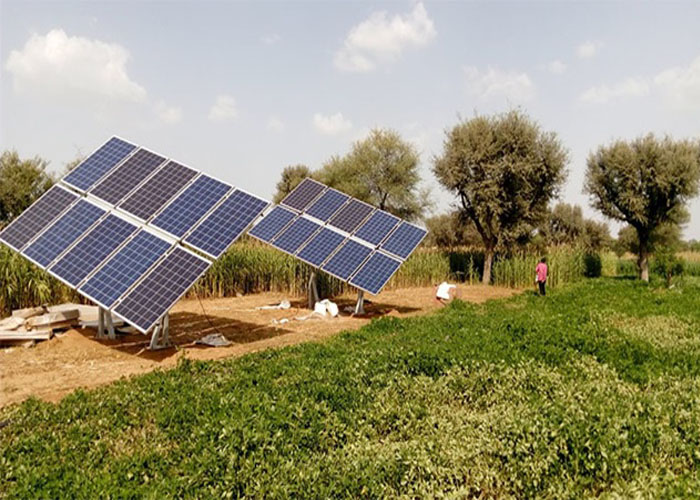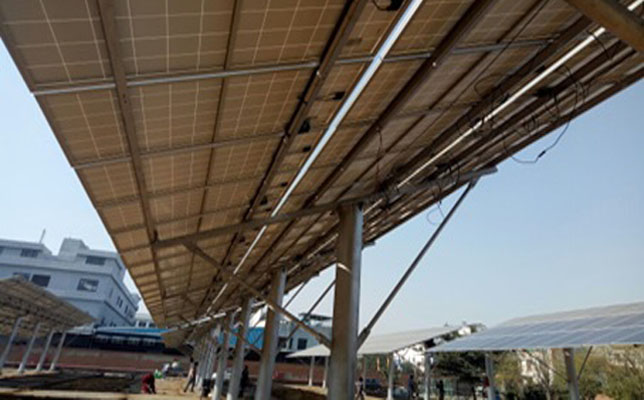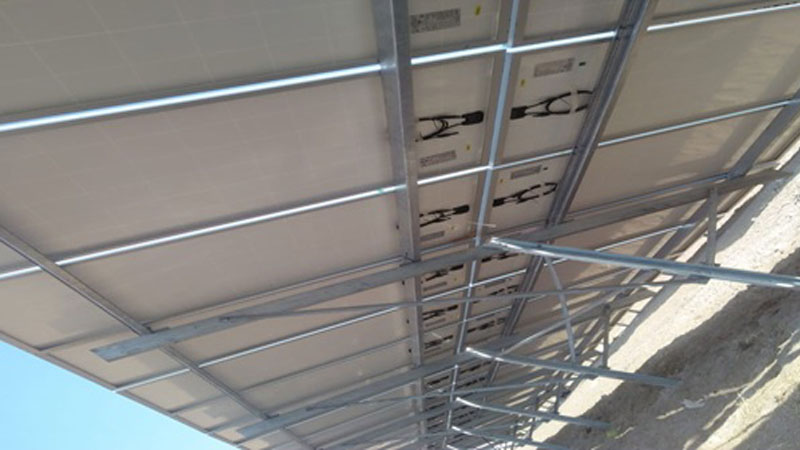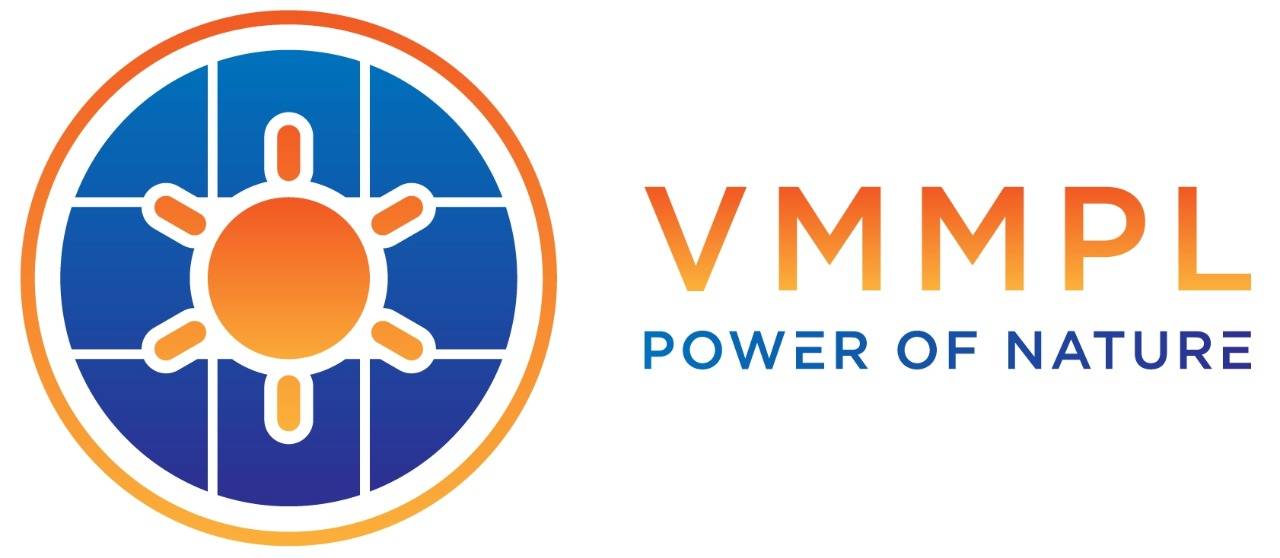VMMPL CARPORT & CAOPY STRUCTURE
Module Mounting Structures play a critical role in setting up a durable, long lasting and efficient solar power plant. The first thing that should be examined before the setting up of module mounting structures, for a ground mount solar plant, is the foundation of these structures. The foundation can be built as a pile foundation or with ramming, among other methods. A strong foundation is the key to a stable mounting structure.

Types of Module Mounting Structures
Based on the design of the plant, and the cost constraints involved, different module mounting structures may be used while carrying out Ground-Mounted solar installations. Here, we detail the specific types of module mounting structures that are used in ground mount installations:
Fixed Tilt Structures:
With Fixed Tilt Structures, the modules are raised on structures, made of Galvalum, Posco. These are held firmly to the ground with a strong foundation. The Fixed Tilt structures are designed at a year-round optimum tilt, as the tilt of the modules cannot be changed once the structures and modules are installed.


Seasonal Tilt Structures:
These structures have holes drilled into the bow of the base supporting structure. These holes can be used to manually vary the tilt of the modules, by removing and re-inserting the screws to the vertical supports to the
ground. The tilt of the modules can be varied from season to season, with changes in arc of the sun path across the sky. In most cases, the tilt of the modules is varied with the season changes of summer and winter.
Trackers:
As a technological upgrade to the Seasonal Tilt Structures, trackers can change the tilt of modules in a more closely calibrated manner. This automates the manual process of physically changing the tilting the modules to the optimum angles. There are two highly prevalent types of trackers:
- Single Axis Trackers: These permit the movement of the module along a single axis, which can be maintained uniformly along a single row or a block of modules. This can be thought of lending to the module a single axis of rotation. Single axis trackers can allow the movement of the module along a vertical axis or a horizontal axis. Single axis trackers can also be installed in tiled module installations as well. An alternative breakdown to studying trackers is as below:
- Dual Axis Trackers: These trackers allow modules to rotate along two axes, allowing for a more precise tracking of the sun’s movement across the sky, allowing for optimum exposure to the sun during different parts of the day and the year.


1.2 Mwp ground Mounted MMS in Pune, Maharastra
The Design of Module Mounting Structures
In order to derive highly efficient designs, software tools may be employed, wherein local standards are used for reference. The inputs used are:
- Location (Latitude and Longitude)
- Structure Tilt: This tilt is dependent on the location of installation.
- Solar Module Dimension and weights: With module design changing with rapid technological advancement in terms of Bifacial, Half-cut cells, etc. and increasing capacities of solar modules, weights and dimensions of the modules must be examined carefully from design to design as they have a critical impact on the structural integrity of the installation.
- Type of structural material: Some common materials used in the manufacture of structures are Galvalum, Posco, and hot dip galvanized metallic structures. The material must allow for the structure to be sturdy so as to withstand the load of the module and the wind load.
